
The Varanidae are a family of lizards in the superfamily Varanoidea and order Anguimorpha. The family, a group of carnivorous and frugivorous lizards, includes the living genus Varanus and a number of extinct genera more closely related to Varanus than to the earless monitor lizard (Lanthanotus). Varanus includes the Komodo dragon, crocodile monitor, savannah monitor, the goannas of Australia and Southeast Asia, and various other species with a similarly distinctive appearance. Their closest living relatives are the earless monitor lizard and Chinese crocodile lizard. The oldest members of the family are known from the Late Cretaceous of Mongolia.

Mosasaurs are an extinct group of large aquatic reptiles within the family Mosasauridae that lived during the Late Cretaceous. Their first fossil remains were discovered in a limestone quarry at Maastricht on the Meuse in 1764. They belong to the order Squamata, which includes lizards and snakes.

Saurornitholestes is a genus of carnivorous dromaeosaurid theropod dinosaur from the late Cretaceous of Canada (Alberta) and the United States.
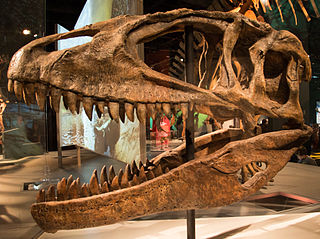
Carcharodontosauridae is a group of carnivorous theropod dinosaurs. In 1931, Ernst Stromer named Carcharodontosauridae as a family, which, in modern paleontology, indicates a clade within Carnosauria. Carcharodontosaurids include some of the largest land predators ever known: Giganotosaurus, Mapusaurus, Carcharodontosaurus, and Tyrannotitan all rivaled Tyrannosaurus in size. Estimates give a maximum weight of 8–10 metric tons for the largest carcharodontosaurids, while the smallest carcharodontosaurids were estimated to have weighed at least 500 kilograms (1,100 lb).

Chirostenotes is a genus of oviraptorosaurian dinosaur from the late Cretaceous of Alberta, Canada. The type species is Chirostenotes pergracilis.

The Horseshoe Canyon Formation is a stratigraphic unit of the Western Canada Sedimentary Basin in southwestern Alberta. It takes its name from Horseshoe Canyon, an area of badlands near Drumheller.
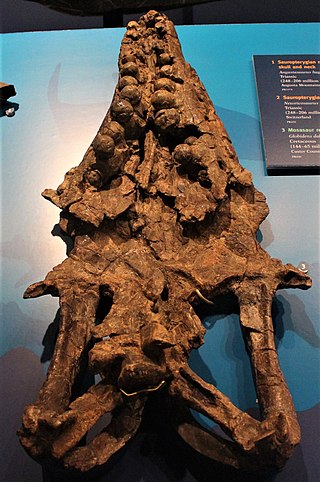
Globidens is an extinct genus of mosasaurid oceanic lizard classified as part of the Globidensini tribe in the Mosasaurinae subfamily.
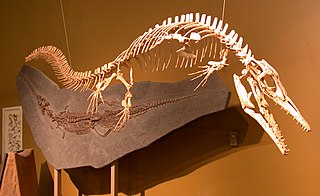
Halisaurus is an extinct genus of mosasaur named by Othniel Charles Marsh in 1869. The holotype, consisting of an angular and a basicranium fragment discovered near Hornerstown, New Jersey, already revealed a relatively unique combination of features and prompted a new genus to be described. Its name is a portmanteau of the Ancient Greek ἅλς and σαῦρος. It was renamed by Marsh to Baptosaurus in 1870, since he believed the name to already be preoccupied by the fish Halosaurus. According to modern rules, a difference of a letter is enough and the substitute name is unneeded, making "Baptosaurus" a junior synonym.
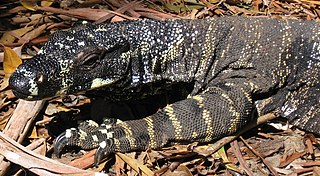
Varanoidea is a superfamily of lizards, including the well-known family Varanidae. Also included in the Varanoidea are the Lanthanotidae, and the extinct Palaeovaranidae.

Centrosaurinae is a subfamily of ceratopsid, a group of large quadrupedal ornithischian dinosaur. Centrosaurine fossil remains are known primarily from the northern region of Laramidia but isolated taxa have been found in China and Utah as well.

Pluridens is an extinct genus of marine lizard belonging to the Mosasauridae. Pluridens is placed in the subfamily Halisaurinae with the genera Phosphorosaurus, Eonatator and Halisaurus. Compared to related halisaurines, Pluridens had longer jaws with more teeth, and smaller eyes. It also grew large size, measuring 5–6 m (16–20 ft) long and perhaps over 9 m (30 ft) in some individuals. The jaws in some specimens are robust, and sometimes show injuries suggestive of combat. The jaws may have been used for fighting over mates or territories.
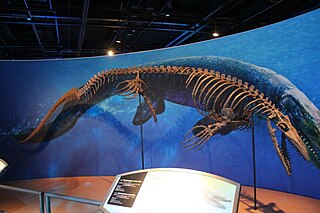
Taniwhasaurus is an extinct genus of mosasaurs that lived during the Campanian stage of the Late Cretaceous. It is a member of the subfamily Tylosaurinae, a lineage of mosasaurs characterized by a long toothless conical rostrum. Two valid species are attached to the genus, T. oweni and T. antarcticus, known respectively from the fossil record of present-day New Zealand and Antarctica. Two other species have been nominally classified within the genus, T. 'capensis' and T. 'mikasaensis', recorded in present-day South Africa and Japan, but their attribution remains problematic due to the fragmentary state of their fossils. The generic name literally means "taniwha lizard", referring to a supernatural aquatic creature from Māori mythology.
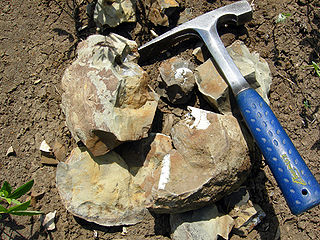
The Pierre Shale is a geologic formation or series in the Upper Cretaceous which occurs east of the Rocky Mountains in the Great Plains, from Pembina Valley in Canada to New Mexico.
Socognathus is a genus of prehistoric chamopsiid polyglyphanodontian lizards containing species that lived from the Middle Campanian stage to the late Maastrichtian. Several specimens of the type species, Socognathus unicuspis, have been found in Alberta, Canada. A second species, Socognathus brachyodon is known from the late Maastrichtian Lance Formation; its fossils have been found in Wyoming, United States.
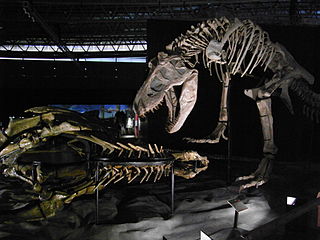
Zhuchengtyrannus is a genus of tyrannosaurid theropod dinosaur known from the Campanian stage of the Late Cretaceous of Shandong Province, China. It belongs to the subfamily Tyrannosaurinae, and contains a single species, Zhuchengtyrannus magnus.
Asprosaurus is an extinct genus of anguimorph lizard from the Late Cretaceous of South Korea. Named in 2015 from the Seonso Conglomerate Formation, the type species Asprosaurus bibongriensis is the first Mesozoic lizard to have been discovered on the Korean peninsula. Because Asprosaurus is known only from fragmentary material, its relationships with other lizards are uncertain. However, features of the lower jaw suggest that it may be a member of a clade called Monstersauria, which includes the living Gila monster.

Leptorhynchos is an extinct genus of caenagnathid theropod from the Late Cretaceous of what is now the US state of Texas, although it has been suggested to also exist in Alberta and South Dakota. The type species is L. gaddisi, and it is currently the only widely accepted valid species. The generic name of Leptorhynchos comes from the Greek "leptos" meaning "small" and "rhynchos" meaning "beak". The specific epithet is in honor of the Gaddis family, who owned the land on which the holotype was discovered.
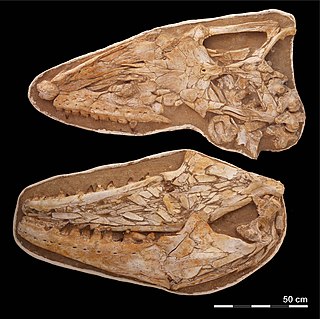
Thalassotitan is an extinct genus of large mosasaurs that lived during the late Maastrichtian of the Cretaceous period in what is now Morocco, around 66 million years ago. The only known species is T. atrox, described in 2022 from fossils discovered in the Ouled Abdoun Basin, where many other mosasaurs have been found. It was assigned to the tribe Prognathodontini alongside other mosasaurs like Prognathodon and Gnathomortis. The prognathodontines are separated from other mosasaurs based on their massive jaws and robust teeth.





















